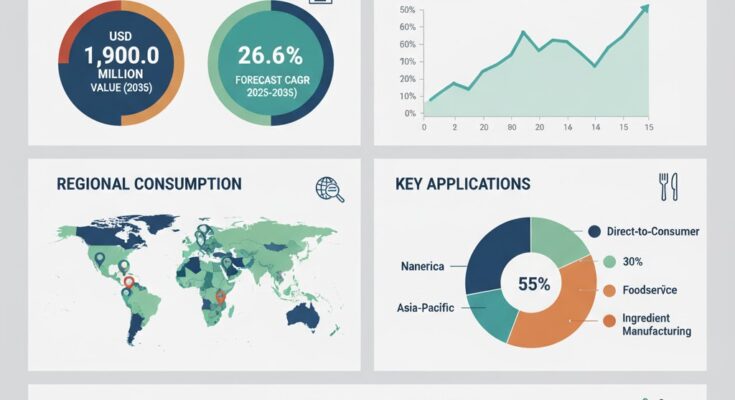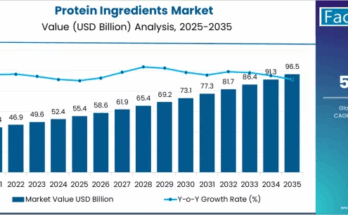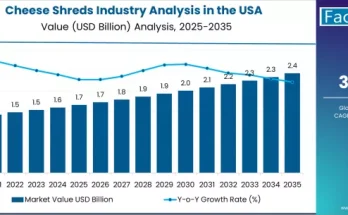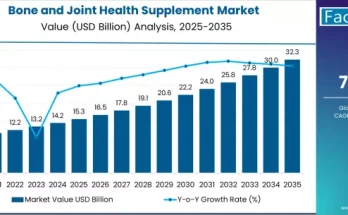The global 3D printed meat market stands at the threshold of a revolutionary decade-long expansion trajectory that promises to reshape food production technology and alternative protein solutions. According to a recent report by Fact.MR, the market is projected to grow from USD 180.0 million in 2025 to USD 1,900.0 million by 2035, reflecting an impressive CAGR of 26.6% during the forecast period.
As the global population continues to rise and concerns about food security, animal welfare, and environmental impact intensify, 3D printed meat has emerged as a game-changing solution in the sustainable food landscape. Using cutting-edge bioprinting and plant-based formulation technologies, this innovation enables the production of customized, nutritious, and environmentally friendly meat alternatives that replicate the texture, taste, and nutritional value of conventional meat products.
Market Drivers: Sustainability, Technology, and Consumer Acceptance
Rising Demand for Sustainable Protein Sources
The global food industry faces mounting pressure to transition toward sustainable protein alternatives. 3D printed meat significantly reduces land and water use while cutting greenhouse gas emissions associated with traditional livestock farming. With increasing consumer awareness of the environmental footprint of meat production, demand for lab-grown and 3D printed alternatives is accelerating rapidly across major markets such as the United States, Europe, and Asia-Pacific.
Technological Advancements in Bioprinting and Materials
Breakthroughs in bioprinting technology, cellular agriculture, and plant-based bio-inks are enabling more realistic replication of animal muscle fibers, fat layers, and connective tissue. Companies are leveraging tissue engineering and advanced extrusion methods to enhance texture, juiciness, and nutritional content. Integration of AI-driven precision printing and automation has also optimized scalability and consistency in production, driving down costs and improving output efficiency.
Shifting Consumer Preferences and Ethical Eating
A growing segment of consumers, particularly Millennials and Gen Z, are embracing ethical and sustainable eating habits. The ability of 3D printed meat to provide an authentic meat experience—without animal slaughter has made it a compelling alternative. The expanding availability of these products through restaurants, food tech startups, and specialty online platforms is further fueling market penetration.
Market Segmentation: Technology, Ingredients, and End Use
The 3D printed meat market is segmented across several key dimensions, reflecting its multidisciplinary nature:
- By Technology: Extrusion-based printing, inkjet-based bioprinting, and laser-assisted printing technologies dominate the market, each offering unique precision and scalability advantages.
- By Ingredients: The market includes both plant-based materials (soy, pea protein, and wheat gluten) and cell-based bio-inks derived from cultured animal cells.
- By End Use: Restaurants, food service chains, and retail outlets represent early adopters, while home-use 3D food printers are gaining attention among tech-savvy consumers.
- By Region: The market spans North America, Europe, East Asia, South Asia & Pacific, Latin America, and the Middle East & Africa, each demonstrating distinct adoption trends and regulatory progress.
Regional Insights
- North America – Innovation and Investment Hub
The U.S. leads in R&D and commercialization, supported by strong venture capital funding and favorable regulatory initiatives promoting alternative protein technologies. - Europe – Strong Regulatory and Sustainability Push
European nations, particularly the Netherlands, Germany, and Spain, are advancing 3D printed meat adoption through public-private research collaborations and sustainable food policies. - Asia-Pacific – Fastest Growing Region
Rapid urbanization, growing middle-class populations, and increasing interest in alternative protein sources in China, Japan, and Singapore are driving significant regional growth.
Competitive Landscape
The 3D printed meat market is characterized by innovation-driven competition, with leading companies focusing on improving printing precision, reducing production costs, and scaling up manufacturing.
Key Players in the 3D Printed Meat Market:
- Redefine Meat Ltd.
- Novameat Tech S.L.
- MeaTech 3D Ltd.
- Aleph Farms Ltd.
- Upside Foods Inc.
- Steakholder Foods Ltd.
- SavorEat Ltd.
- Cocuus Systems S.L.
- Revo Foods GmbH
- Formo Bio GmbH
- Shiok Meats Pte. Ltd.
- 3D Bioprinting Solutions LLC
- Beyond Meat Inc.
- Good Meat Inc.
- Mycorena AB
These companies are strategically investing in technology partnerships, regulatory clearances, and pilot-scale facilities to accelerate commercialization. Mergers, acquisitions, and collaborations with the hospitality and retail sectors are enhancing product visibility and consumer reach.
Recent Developments
- May 2025 – Redefine Meat Ltd. announced the opening of Europe’s largest 3D printed meat production facility in the Netherlands, aimed at supplying plant-based steaks to restaurants and food distributors.
- January 2025 – Aleph Farms secured new funding to expand production of its cell-cultured steaks, targeting commercial launch in the U.S. and Asia.
- September 2024 – Revo Foods introduced the first 3D printed salmon fillet in European retail stores, marking a milestone for the seafood alternative segment.
Future Outlook: The Decade of Printed Proteins
The next decade will redefine how meat is produced, distributed, and consumed. The 3D printed meat industry is set to benefit from:
- Enhanced Bioprinting Efficiency – Faster production and finer texture control.
- Cellular Agriculture Integration – Blending cultured cells with plant proteins for hybrid products.
- Sustainable Manufacturing Ecosystems – Zero-waste production and localized food networks.
- Mainstream Consumer Access – Expansion into retail and direct-to-consumer markets.
By 2035, 3D printed meat will become a mainstream component of global protein consumption, combining innovation, ethics, and sustainability to meet future food demands.



